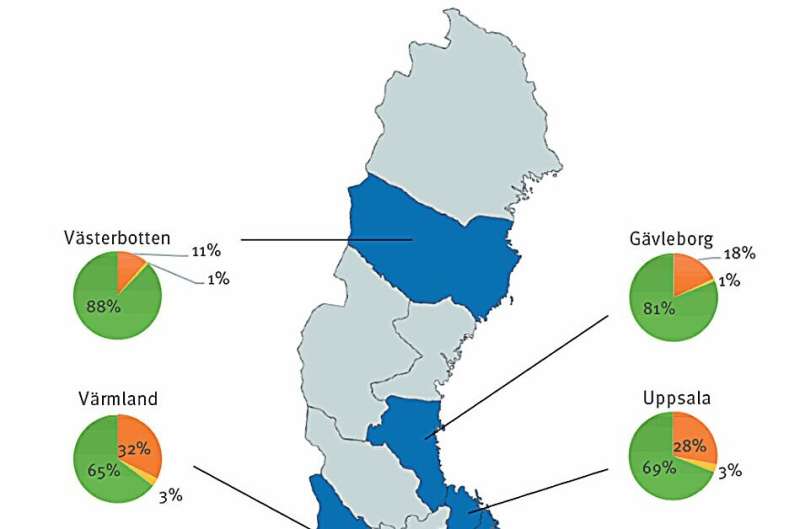This article has been reviewed according to Science X's editorial process and policies. Editors have highlighted the following attributes while ensuring the content's credibility:
fact-checked
trusted source
proofread
Many more infected by tick-borne encephalitis virus than previously known, finds Swedish blood donors study

The number of infections by the tick-borne TBE virus that are not detected by health services is far higher than previously assumed. This has been shown in a new study of Swedish blood donors from Uppsala University and the University Hospital in Uppsala. The results have been published in the journal Eurosurveillance, which is associated with the EU's Center for Disease Prevention and Control.
"We were very surprised that such a high proportion of the blood donors showed traces of a previous TBE virus infection. This is far more than could have been suspected based on the number of reported cases," says Bo Albinsson, doctoral student at Uppsala University, one of the first authors of the article.
Tick-borne encephalitis (TBE) is a very serious disease that is increasingly common in large parts of Europe. According to statistics from the Public Health Agency of Sweden, 597 cases of the disease had been reported in Sweden by November 2023, the highest number ever registered in a single year.
TBE has been a notifiable disease since 2004 under the Communicable Diseases Act and all cases must therefore be reported to the regional infection control doctor and the Public Health Agency of Sweden. However, people who only develop mild symptoms or no symptoms at all are not detected by the health services and therefore do not show up in the statistics. Until now, the relationship between the number of reported cases and the proportion of people infected was unknown.
Traditional methods of investigating whether someone has previously been infected by the virus are not completely reliable as individuals who have been vaccinated against TBE can also test positive. On top of this, it is not known exactly how many people have been vaccinated, since Sweden has no national vaccination register for TBE.
In the new study, the result of a Swedish collaboration, the researchers have investigated blood tests from 2,700 anonymous blood donors from nine regions in Sweden. The method they used is called TBE-SMIA (suspension multiplex immunoassay) and was developed at the Zoonosis Science Center (ZSC) at Uppsala University in collaboration with the Clinical Microbiology Department at Uppsala University Hospital.
It makes it possible for the first time to effectively distinguish the antibody response after TBE virus infection from the response after TBE vaccination. This has enabled the researchers to identify how many people have had the infection. They were also able to estimate the proportion of the population in each region that is vaccinated.
The results showed that the proportion of blood donors with a history of TBE virus infection varied from 1% to 7% between the different regions. Based on the population sizes of the regions, the researchers estimated that this corresponds to a total of more than 160,000 people aged 15–65, which is significantly higher than previous estimates.
The researchers also found that the proportion of blood donors vaccinated against TBE varied between 8.7% and 57% in the different regions. In total, this translates to over 1.6 million Swedes (aged 15–65) in the regions investigated.
"It is noteworthy that the number of confirmed TBE cases is increasing despite relatively good vaccination coverage. Further research is therefore needed, for example by carefully mapping the distribution of the virus in different tick populations. Our results provide an important background for future vaccination strategies and we believe it would be well worth considering establishing a national vaccination register for TBE," says Tove Hoffman, researcher at the ZSC and the study's other first author.
More information: Bo Albinsson et al, Seroprevalence of tick-borne encephalitis virus and vaccination coverage of tick-borne encephalitis, Sweden, 2018 to 2019, Eurosurveillance (2024). DOI: 10.2807/1560-7917.ES.2024.29.2.2300221



















